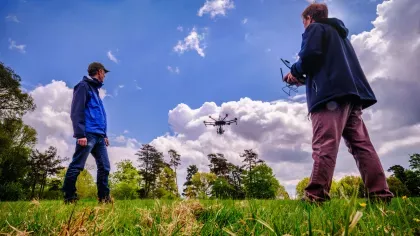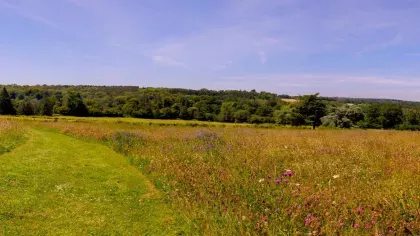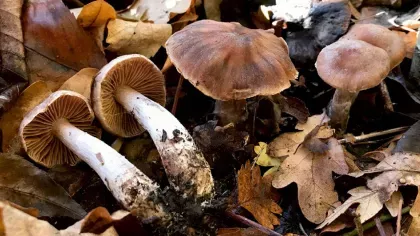15 December 2023
Communicating carbon: The voices behind Nature Unlocked
Hear from our experts and discover the answer to storing more carbon.

Over the past year, Wakehurst’s expansive habitats have become a living laboratory for a team of scientists investigating how carbon is stored and behaves across our landscapes.
We've recorded interviews with the scientists behind our Nature Unlocked research, as part of a new audio interpretation unit in the gardens, recorded by Audio Producer Eka Morgan.
Hear the interviews below, and test your knowledge of climate change.
The full picture
Research Lead Justin Moat oversees the carbon research at Wakehurst, bringing together the below ground and above ground research, to build the full picture of carbon storage.
'Part of my job is to understand how much carbon we have in the landscape. What we're going to do is look at how much carbon is within a tree in its landscape.
As we move from the top of the tree, we have the leaves, and those leaves are doing all of the work – converting the sunlight and the carbon dioxide into carbon and woody matter. But in actual fact, there's very little carbon in there.
As we move to the trunk of the tree, we have large amounts of carbon in there where all the woody matter of the tree is being produced […] but in the soil, that's where lots of the carbon is sitting.'

Digging deep
Mycology Research Lead Laura is heading up a team of scientists digging for answers in the soil.
By taking soil samples and investigating the DNA within, we’re understanding how different types of fungi play a role in carbon storage.
Listen to find out why we should be turning to the soil for answers.
'Below ground [mycorrhizal fungi] connect to the roots of plants. 90% of the plants we know form this relationship. In this relationship, they explore the soil through fungal filaments, and they get nutrients and water that they transfer to the plants in exchange for carbon.
In UK forests, up to 80% of the carbon can be stored in soil. There is much more carbon in the soil than in the atmosphere and the vegetation together.
Once we understand the role of these fungi in carbon storage below ground, we hope to inform better decisions in future on what to plant, and where, to optimise carbon storage.'
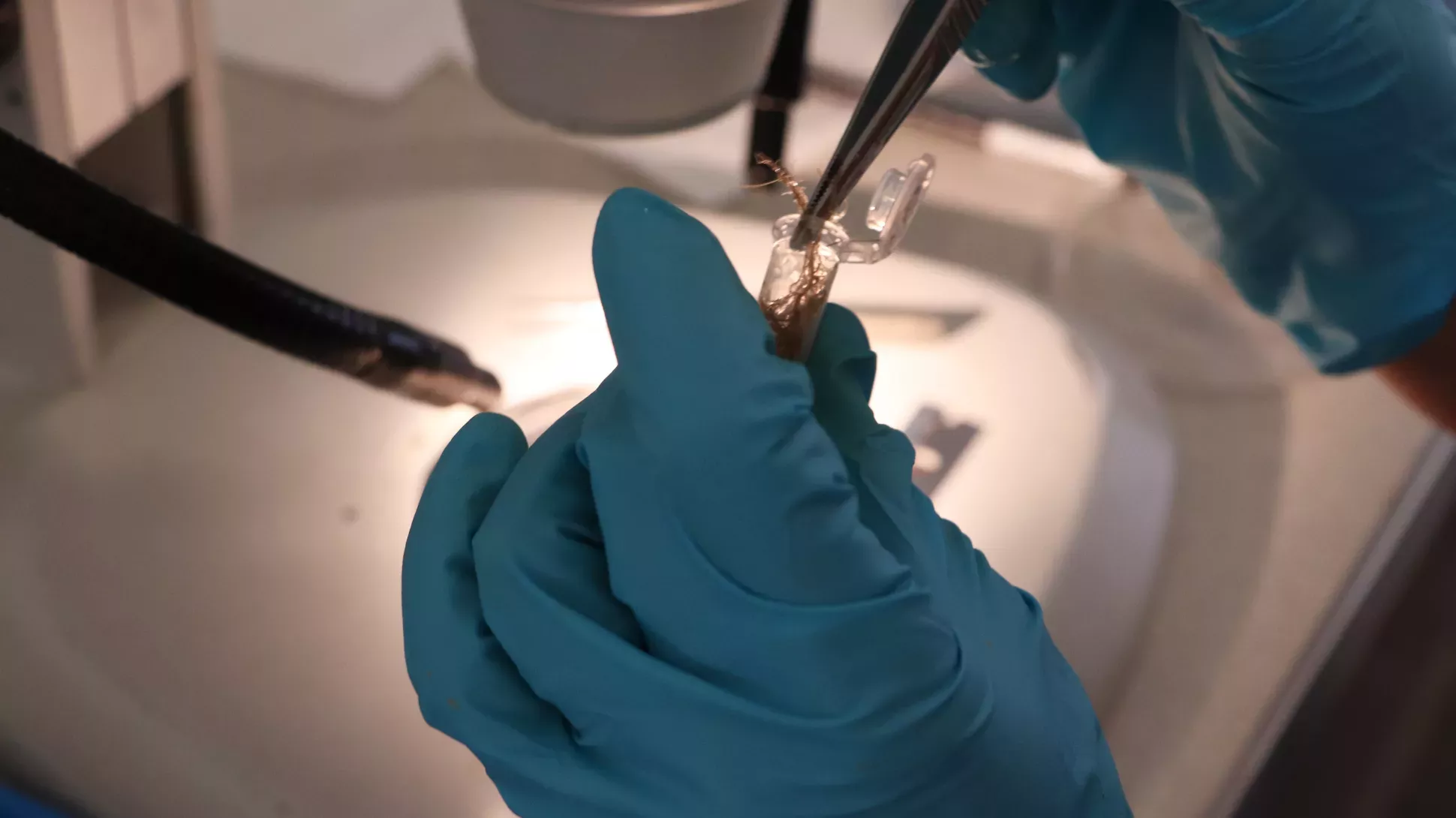
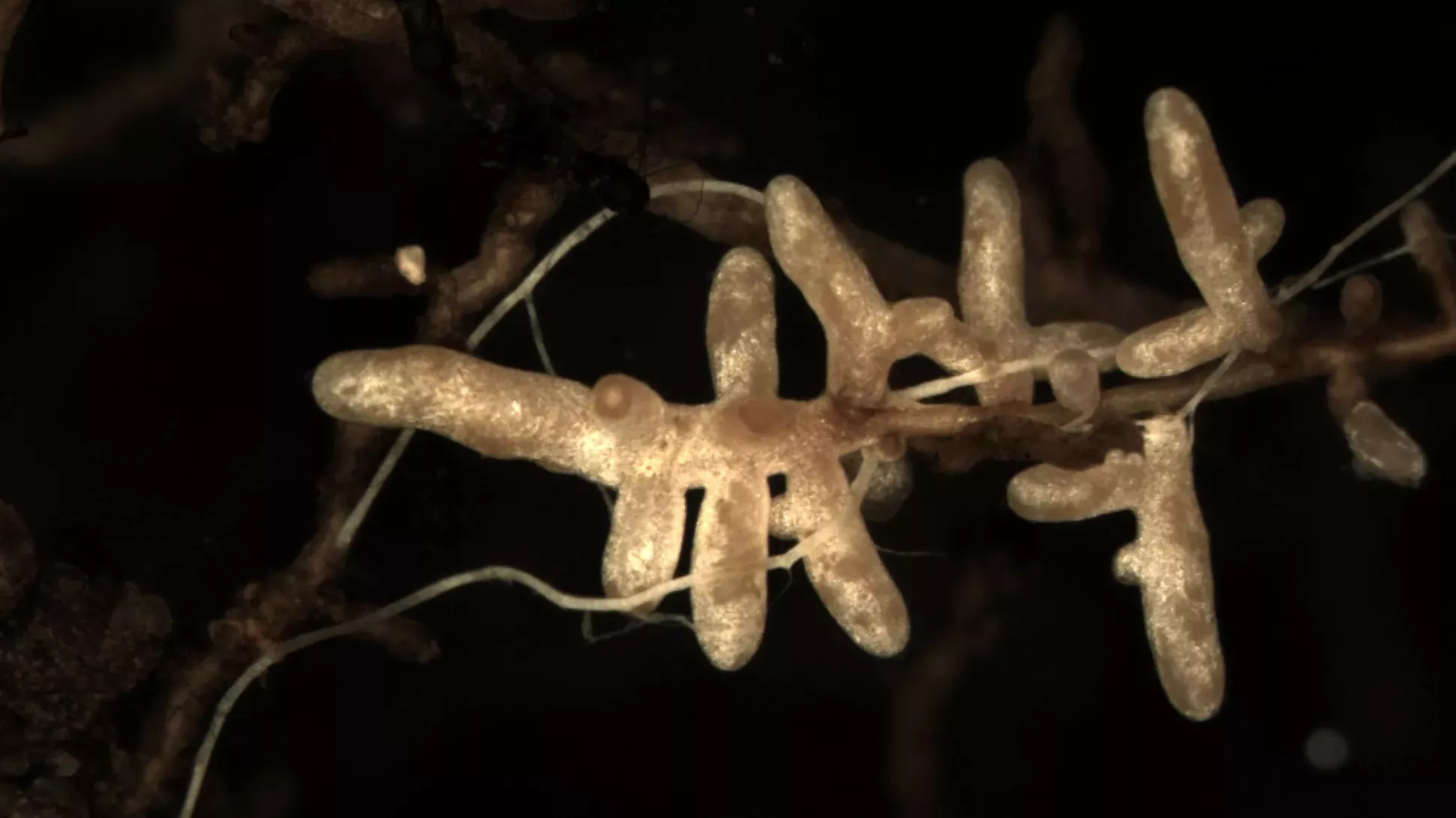
Scanning for answers
Spatial Analysis researcher Gui is investigating carbon storage in our trees, looking closer than ever before with the help of 3D laser scanners, both on the ground and attached to drones.
So far, the team has carried out more than 20 hours of drone flights and taken over 16,000 photos to build the full picture.
Listen to find out how this data will make an impact on a national scale.
'We measure trees using high resolution technology such as LiDAR, which is essentially a 3D laser scanner that allows us to capture huge amounts of data about our trees.
So far, I've scanned more than 1000 trees in different habitat types, from broadleaf woodlands to pine forests – but that's the quick step! Now the data analysis stage is the much longer process and that's where we build the 3D models of the trees individually to understand the total weight – so essentially the biomass of the tree and within that biomass how much carbon every tree has.
We want to encourage woodlands that are resilient to climate change, but also that can provide different contributions to biodiversity so we can tackle all of these challenges in a much better way.'


Measuring in the middle
One extremely important element in the carbon research is gas flux, and understanding how gases such as carbon dioxide are released from the soil.
Research lead Dr Gary Egan explains how equipment, such as high-tech monitoring chambers, are giving us further insight.
'These chambers are in a parked position; they continuously monitor the flux of CO2. For two minutes out of every hour they move, and they sit on the soil to measure how much CO2 is coming out.
We're really lucky here at Wakehurst to be involved in a project that looks at the above-ground carbon, the below-ground carbon, and the flux between the two. There are not many other people who are involved in a similar study.'
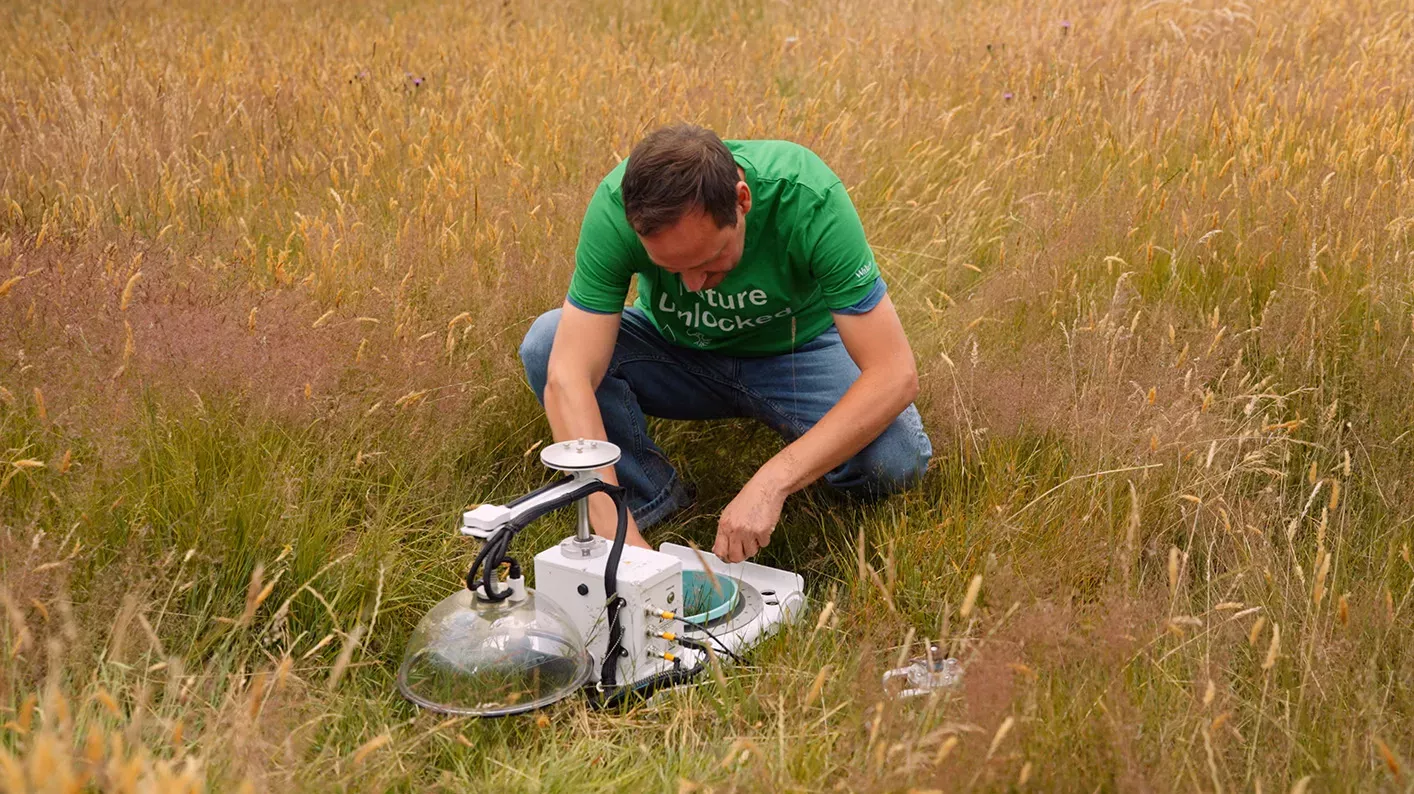
Heroic hedgerows
Vital to our wildlife, agriculture, and biodiversity, hedgerows could hold more carbon than expected.
Scientist Mandy Cooper is exploring how hedgerows could be key in the development of nature-based solutions for climate change.
'We only have about half of the hedgerows that we used to have.
We know that hedgerows are important for supporting nesting birds and small mammals, and that they serve an important role in agriculture for marking out field boundaries and protecting livestock.
What we want to understand is, in addition to being important for biodiversity, what role hedges play in storing carbon.
What we're hoping that this work will highlight is the importance of hedgerows for storing carbon, and promote not only growing hedgerows wider and taller to have even more wood within them, but also to convince landowners and the government that we need more hedgerows to help combat climate change.'

Sustainable to the core
With climate change at the forefront of the news today, Head Sustainability at Kew, Rachel Purdon, helps us to navigate the buzzwords and jargon associated with climate change communication.
Net Zero
'Net zero used to be referred to commonly as ‘climate neutral’, and it's a term for organisations who are seeking to reduce their emissions as rapidly as possible.'
Carbon offset
'Carbon offsetting is the term for taking action to remove or draw down carbon from the atmosphere and store it somewhere safely lock it away, so you're balancing any remaining emissions, and storing them somewhere where they can't do any harm.'
Carbon sequestration
'Carbon sequestration is the process that often through natural growth, so for example, by trees growing, they're drawing down carbon and locking them safely away in their branches, their trunks and their roots.'
Climate positive
'Climate positive is a term for organisations that are going one step beyond net zero. So, to draw down more carbon than they emit and have a positive impact, fighting climate change.'
Nature-based solutions
'Nature-based solutions is a term used to refer to investment in nature, investment in restoring and protecting natural habitats and ecosystems for a whole range of benefits.
[This includes] carbon sequestration; drawdown of carbon and storing it safely; but other benefits too including clean air, clean water preventing erosion and the myriad of wonderful things that nature does for us.'

Becoming climate positive by 2030
'Kew is taking a bunch of steps to achieve our target of becoming climate-positive by 2030. Some of those actions include trying to install more renewables on our site and transitioning to use electric vehicles and electric heating.
We’re also expanding the plant-based menus at our restaurants and encouraging people to choose plant-based food and drink choices.
We're working to use rainwater, and store that rainwater for the dry spells. For many years we've only been using peat-free compost.
Those are just some of the first steps we're taking. There's a lot more to come!'

A living laboratory
Nature Unlocked has transformed Wakehurst from a botanical garden to a site of pioneering scientific research, a journey which was led by former Director of Wakehurst, Ed Ikin.
'This amazing landscape that we're standing in [has] got an intrinsic beauty – it's absolutely full of plant life, insect life, fungal life, but it's also really important for us as well.
It's got an amazing ability to store carbon and reduce the impacts of climate change – its ability to control flooding, for example, and it's filled with really important populations of insects that are beneficial to our local agriculture. We knew that if we could research this landscape, we could build a stronger case for nature.'

Small steps at home
'Consider your garden as a habitat. Perhaps reduce the amount of annual plants that come and go, and as a consequence reduce the amount of bare soil in your garden, as bare soil emits greenhouse gases.
If you've got continuous cover in your garden, then you'll have a continuous population of bacteria and fungi growing below your garden, which can help to make your garden more healthy and also to lock up carbon too.
And then, rather than partitioning your garden off with a fence, why don't you go for a hedge? Hedges can be very beautiful, they can also act as a mini woodland and lock up carbon, and they can support a wonderful population of insects or birds.'
Test your knowledge
Want to test your knowledge? Julie and Joe from the Wakehurst learning team have devised a quiz to help you become a carbon connoisseur – scroll down for the answers and play along below.
Questions
1. What do scientists agree is causing climate change?
A. Human activity such as burning fossil fuels
B. The sun
C. Cows burping methane
2. What's one of the easiest ways you can help reduce climate change?
A. Become a scientist
B. Move to another planet
C. Eat less meat
3. How much of the world's food is thrown away uneaten every year?
A. A third
B. A quarter
C. Only the Brussels sprouts
4. What everyday activity counts for almost 1/4 of the carbon footprint of a typical UK home?
A. Driving to work
B. Heating up water
C. Eating baked beans.
5. Where were the first solar panels as we know them today used?
A. Germany
B. On the roof of the Millennium Seed Bank here at Wakehurst
C. Space

Answers
- A: Human activity
- C: Eat less meat
- A: A third
- B: Heating up water
- C: Space
